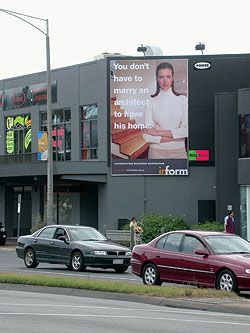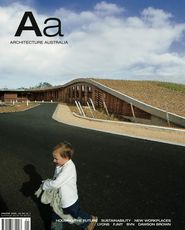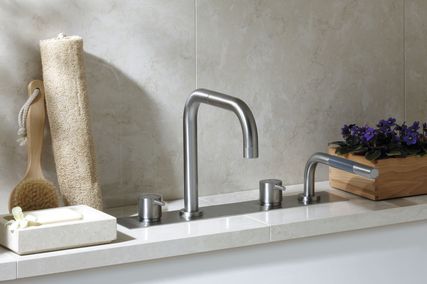
“YOU DON’T HAVE to marry an architect to have his home”. So reads a billboard on Melbourne’s Nepean Highway. Out there in ad-land (and in the imagination of the general public to which billboards must appeal) it seems architects are men, they live in desirable houses, and women marry to acquire lifestyle and possessions. The billboard – with its image of a neatly groomed young woman – gives little indication of what the advertiser actually is, although it also includes the smaller words “Contemporary Australian Architecture”. Looking up the website address reveals a building company whose aim is to “provide the best quality, architect designed homes at prices that make them affordable to a wider spread of our community”.
A laudable intention, but a dodgy ad.
Perhaps we should just shrug our shoulders in bewilderment and keep driving, but among the many bizarre assumptions contained in this single sentence is one that nags. The ad points to broader perceptions but also to a certain problem within contemporary Australian architecture: namely, where do all the women go? Women have been studying architecture in significant numbers for some time (when I started first year nearly twenty years ago half the class were women) yet there is still a big gap between the numbers graduating and those practising visibly, especially in the upper levels of the profession. Many women who train as architects end up in related areas. Indeed, a significant proportion of the reviews in this magazine are written by smart, insightful women, but only a very few of the buildings so reviewed are identified as the work of women architects (although looking closely at the project teams reveals a more complex situation). But many more graduates seem simply to disappear.
A recent survey by Paula Whitman, senior lecturer at QUT and RAIA Qld Chapter president, seeks to come to some understanding about why women are so massively under-represented in senior positions in the profession. Paula’s survey has not yet been released in its entirety. When it is, Architecture Australia will publish a fuller discussion of the issues it raises. At the moment all that is in the public realm is Warren Kerr’s description of some of the key findings in his President’s Foreword in this issue, and an earlier press release from the RAIA announcing that architecture has no glass ceiling – based in the interviewees’ comments that career progression, or lack of it, was an effect of their own decisions not discrimination within the profession. This earned an incredulous and passionate response from Elizabeth Farrelly in the Sydney Morning Herald.
What if that woman on that billboard was the architect, not the potential wife or house buyer? From Paula’s survey it seems she would typically measure her success in terms of client and personal satisfaction rather than awards won; she would value “balance” over promotion, have taken time off to study, travel or raise children, have good current job satisfaction, but would be dissatisfied with pay levels and long-term career opportunities. My own anecdotal knowledge suggests she would also be frustrated at being constantly labelled a “woman architect” rather than simply being recognized as an architect, while nevertheless realizing that issues around gender have various diverse effects on what women in architecture do (which is not the same as saying women make certain kinds of buildings) and how they are perceived and represented by others.
So how do we negotiate such complicated situations? Feminist theory in all its contradictory diversity gives us a range of strategies to find our way through such situations, to keep moving and to try to shift things along. But something else has gone missing of late. Feminism, which was so cool when I was studying in in late 80s and early 90s (albeit in another country), has all but disappeared from architectural discussion. At that time we all read Beatriz Colomina’s Sexuality and Space, the essays that preceded it and the shelf-load of books that followed. We learnt to deconstruct myths of architectural genius (and billboards like that on the Nepean), and we learnt that gender and architecture is a much more complex matter than the number of women practicing – although such pragmatic questions are vital. Feminist theory allowed us to begin to explore the slippery relationship between pragmatic experience and broader metaphorical questions, and to find strategies to work through it.
But, as Paula’s survey points out, everything was not solved. Why, then, did the discussion evaporate? The issues are too important, the problems too entrenched, to simply go out of fashion. We need to keep inventing ways to practise, in its widest sense, which both make more room for women and move architecture along.
JUSTINE CLARK















